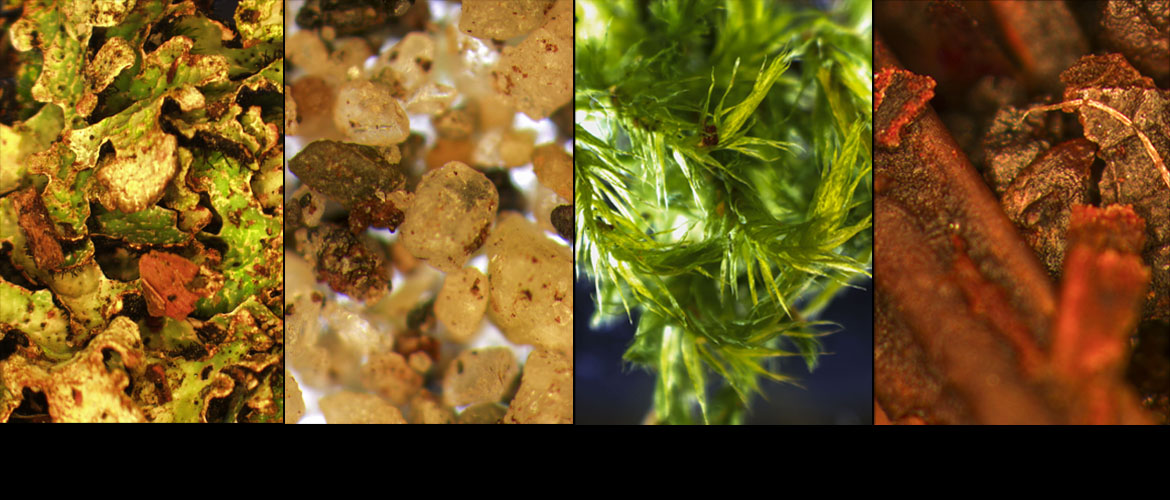
Jose M. Torres T., an undergraduate student enrolled in the Design in architecture, landscape architecture and urbanism program, captured the beauty of the materials that we often overlook using the Olympus SZX10 stereomicroscopy. From Left to Right, lichens from Totem Park Woods, Sand from Wreck Beach, lichens from gravel in MOA area, Wood and soil from Totem Park Woods.
I and my group developed an apparatus that could measure experience through physical interaction with the environment. To achieve this, we created a textile piece that could be attached to the user’s legs and would be marked by the interaction with the environmental material while also collecting some of it for further study.
Our intention was to challenge the traditional concept of dirt as something unclean and unwanted. We wanted to show how visually appealing and interesting this “dirt” could be if we just had a higher level of appreciation and attention for it. By creating a piece that interacted with the environment, we were able to capture and showcase the unique characteristics of each environment and highlight the beauty of the materials that we often overlook.
Through this project, we hoped to spark a new perspective on the world around us and inspire a greater appreciation for the small but significant details that make up our environment.
Then I decided to further carry my investigation using a microscope to take close-ups of the samples with the kind help of the UBC BIF, Miki Fujita, and Eun Kyoung Lee.
After capturing images of the different samples, I developed a process for creating collages using three microscope close-ups. First, I simplified and outlined the shapes of each close-up to identify key features and make the images easier to work with. Next, I assigned each young factor to a specific type of line, which helped me understand the location of details and the flow of important data within the images.
Then, I overlaid same-material close-ups and used the lines and their intersections to create sectors in the collage. I assigned each sector to one of the three layers according to which layer displayed the highest quality of detail for that sector. To determine this, I used the predominance of the line type as my guidance.
The overall goal of this approach was to ensure that each sector displayed the largest amount of detail possible from the same sample.